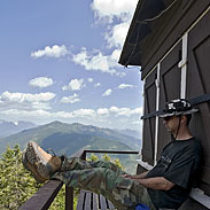Landscape Architecture for Landscape Architects › Forums › DETAILS & MATERIALS › Traffic Calming: Speed Humps/Tables
- This topic has 1 reply, 6 voices, and was last updated 15 years, 10 months ago by
 Andrew Garulay, RLA.
Andrew Garulay, RLA.
-
AuthorPosts
-
February 8, 2010 at 3:36 pm #171226
Chad Shaw
ParticipantHas anyone had any experience desiging speed humps/tables as traffic calming devices? The project is a school site, with the humps extending across a 24′ wide, two-way traffic lane across the site (with adjacent parking lots). Ideally, the humps will be 6″ tall to accomodate pedestrian access from sidewalk to sidewalk. Any info on slopes/length of ramps, table dimensions, etc? Concerns on speed humps near/in curves?
February 8, 2010 at 6:02 pm #171233 Andrew Garulay, RLAParticipant
Andrew Garulay, RLAParticipantI did some design examples for a private community a few years back. There is a lot out there on municipal websites. They explain the difference between humps and tables very clearly. Tables need to be long enough so that the shock absorbers can’t take out the reaction of the car at higher speeds as bumps do. Google it, you’ll get quite I bit to work with. I know I did in 2003.
February 8, 2010 at 6:25 pm #171232 Jason T. RadiceParticipant
Jason T. RadiceParticipantTables don’t work well. I’ve used them in the past at a client’s request and they have a minimal effect on speed. I prefer using neck-downs at crosswalks and high contrast paving materials, in conjunction with some sort of highly textured surface prior to the crosswalk (mortared cobbles work GREAT).
February 8, 2010 at 7:08 pm #171231 BoilerplaterParticipant
BoilerplaterParticipantI agree about the neck-downs. They provide a better visual cue. This is especially so if you are in an area where paint on pavement doesn’t last long or gets covered with black from tires and exhaust, as it does in the dry southwest. Personally, I think a speed table forming a crosswalk can look nicer than sidewalk ramps going down to a crosswalk, especially if its done in pavers with a border of rougher pavers like the cobbles suggested.
February 8, 2010 at 7:17 pm #171230Chad Shaw
ParticipantThanks for the suggestions….however, the specific places where I’m considering including traffic-calming elements aren’t at intersections, making the idea of a neck-down a bit difficult. I’m not completely sold on the speed table idea; in fact, a painted crosswalk might end up doing the trick. Speed humps/tables have been considered because of the length of the drive that they would cross- the likelihood of student drivers speeding through the site seems fairly high, and something needs to be done.
February 8, 2010 at 8:50 pm #171229 Jason T. RadiceParticipant
Jason T. RadiceParticipantIf this is mid-block, then a crosswalk is VERY dangerous, requiring plenty of signage and visual cues. . You can place the neck-downs mid block (they don’t have to be at intersections) and would consider it a requirement for a mid-block crossing. A speed table actually may work here since the crosswalk would be narrow, but would require bollards to protect pedestrians from traffic. Speed tables usually require a 6′ ramp to sidewalk level from pavement, and I would not go over 8′ wide for the crosswalk. Also, consider drainage, as the table would interefere with the course of water. Another approach would be to use a zig-zag type traffic obstruction, where you are redirecting the traffic around an island with neckdowns at either end. The island gives pedestrians a chance to cross half of the road, if it is busy. Again, you would need bollards to protect the pedestrians, and the island provides a great place for signage.
As far as visibility and durability go, I’m a clay brick guy, but there are times when thats too expensive and just not necessary. You might look into this: http://www.integratedpaving.com/our-products/streetprintxd.cfm. I’ve used their DuraTherm product in the past with good results, and this new StreetPrint XD product looks very promising. This is NOT stamped asphalt, rather a synthetic asphalt (epoxy like) that is heat bonded to an asphalt base. The color lasts and the pattern does not crush like stamped asphalt.
February 8, 2010 at 8:53 pm #171228 Chris WhittedParticipant
Chris WhittedParticipantNot being at an intersection should actually be a bit easier than otherwise. We do mid-block neck-downs out here all the time. You lose some on-street parking (if you had it to start with), but you also gain some potential stormwater benefits if the design takes advantage of that. Another alternative would be a refuge/landscape island in the middle of the street rather than necking it down.
As others have mentioned, there are a lot of municipal sites out there with detailed information. Bumps and tables are not favored here for a number of reasons, including lots of complaints by the public, expense of construction and maintenance, creation of ‘speedways’ between bumps, and playing havoc with snow plows/removal.
Your geographic location as well as the specific site situation may not have a number of those concerns (bumps are still quite common in parking lots, despite the snow removal issue).
February 8, 2010 at 9:20 pm #171227 Trace OneParticipant
Trace OneParticipantWe put bulb-outs mid-block in Charlottesville, created a wavy driving pattern, and, man, if you don’t get buy-in from the public, the public just aims at those things and drives over them, shocks be damned..I say put in stop signs..A heck of a lot cheaper – have a cop ticket for a few times, and make them very visible. Nothing wrong with cars coming to a complete stop. A fake police car parked close to the stop sign also will do wonders.
-
AuthorPosts
- You must be logged in to reply to this topic.


